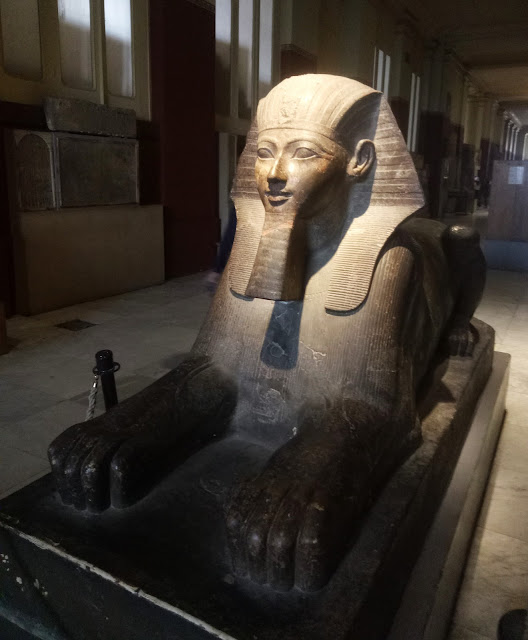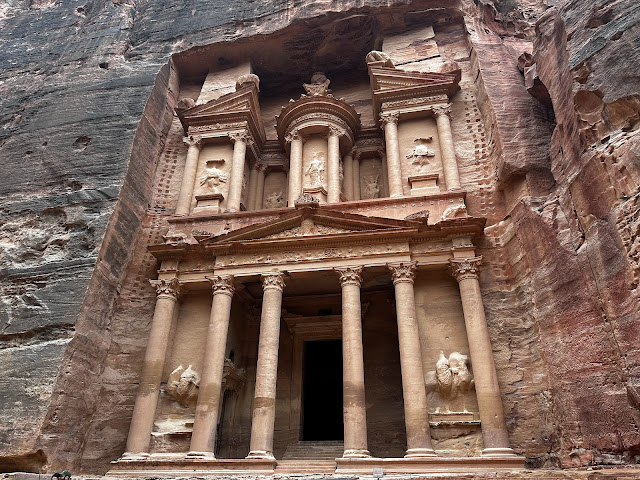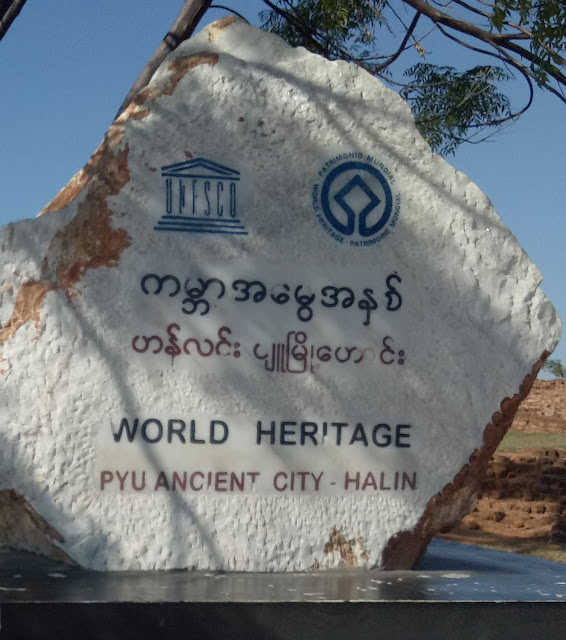The mortuary temple of Queen Hatshepsut
The mortuary temple of Hatshepsut is a mortuary temple complex constructed during the reign of Pharaoh Hatshepsut (reign: 1479 BCE – 1458 BCE, Eighteenth Dynasty of Egypt). The Great Royal Wife of the Pharaoh Thutmose II (reign: 1493 BCE - 1479 BCE) whom she succeeded, Hatshepsut is the second recorded queen regent of Egypt, the first being Sobekneferu (a.k.a. Neferusobek), the last ruler of the Twelfth Dynasty of the Middle Kingdom of Egypt.

Queen Hatshepsut : The Museum of Egyptian Antiquities in Cairo
Located opposite the city of Luxor in Egypt, the temple was constructed between the seventh and twentieth year of the reign of Hatshepsut. The overall structure of the temple contained the entrance gate, the lower terrace, the lower porticoes, the ramps, the middle terrace, the middle porticoes, the north portico, the Hathor Shrine, the Anubis Shrine, the upper terrace, the festival courtyard, the Amun Shrine, the solar cult court and the mortuary cult complex.
The condition of the original mortuary temple suffered significantly over time. Her stepson and successor Pharaoh Thutmosis III (reigned until 1425 BCE upon the death of Hatshepsut) attempted to destroy all references to her reign. Once again, during the reign of Pharaoh Akhenaten (also known as Amenhotep IV; reign: 1353 BCE - 1336 BE/1351 BCE - 1334 BCE), the temple was affected by the Pharaohs' decision to destroy the images related to the traditional Egyptian religion of polytheism, in his attempt to convert the society to Atenism (the worship of Aten, the sun disc). The temple was repaired during the subsequent reigns of Tutankhamun (reign: 1332 BCE – 1323 BCE), Horemheb (reign: 1319 BCE – 1292 BCE) and Ramesses II (reign: 1279 BCE – 1213 BCE). During the Ptolemaic period (305 BCE – 30 BCE), Ptolemy III Euergetes and Ptolemy IV Euergetes further altered the temple.
 |
| The 18th Dynasty Alabaster Sphinx of Queen Hatshepsut, located in Memphis, Egypt (1550 BCE) |
 |
| The granite Sphinx of Queen Hatshepsut, believed to have originated from her mortuary temple complex (currently in display at the Museum of Egyptian Antiquities in Cairo) |
 |
| Queen Hatshepsut : The museum of Egyptian Antiquities in Cairo |
Between the 6th and 8th Century CE, a Coptic monastery dedicated to Saint Phoibammon of Preht was constructed on the temple premises with images of Jesus Christ and other saints being painted over the original reliefs. The temple was continued to be used as a place of worship, probably until the 13th Century CE, with the latest graffito being dated back to approximately 1223 CE.















Comments
Post a Comment